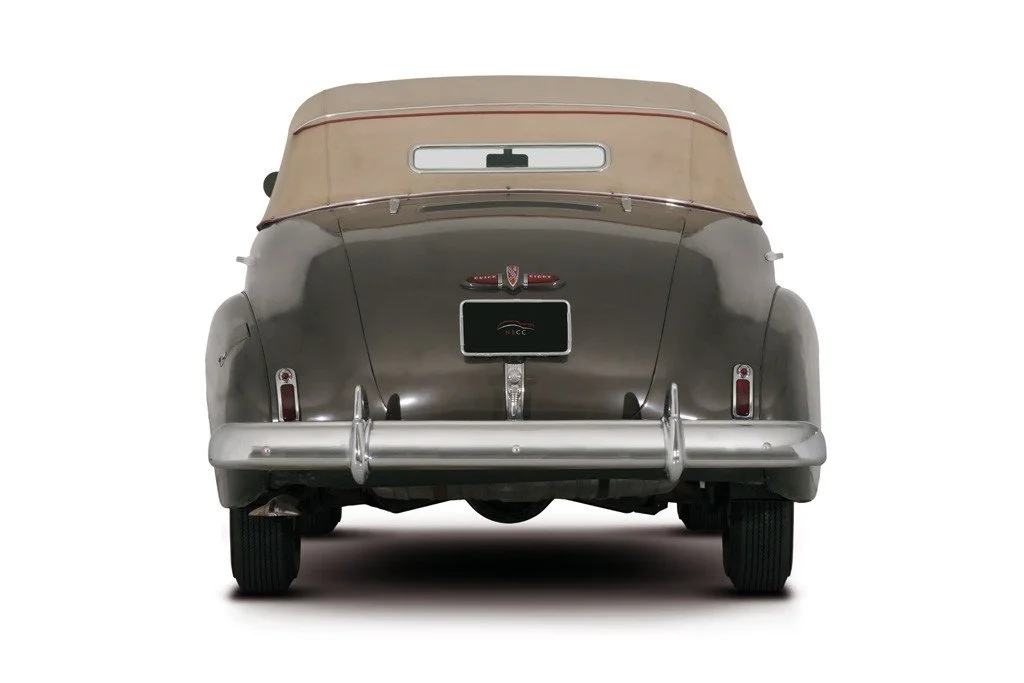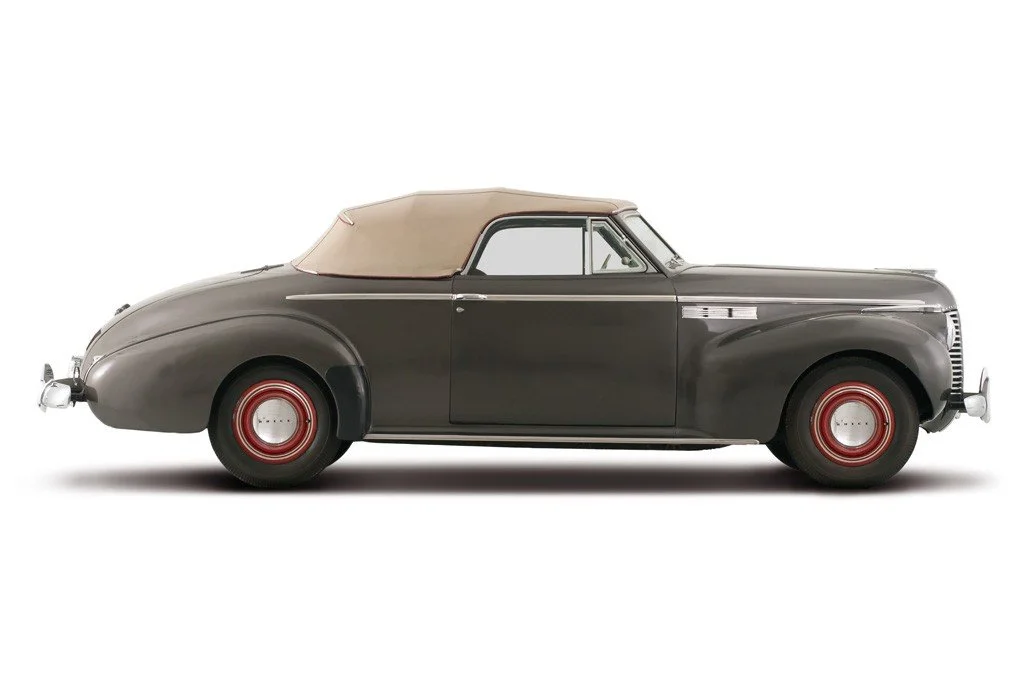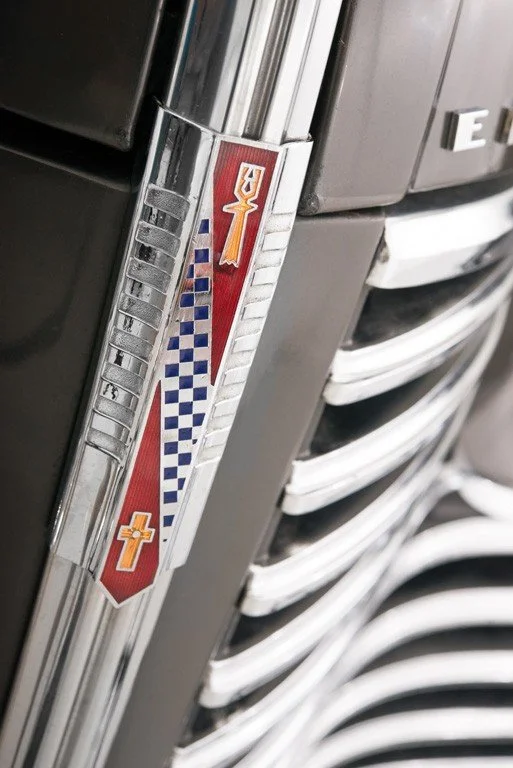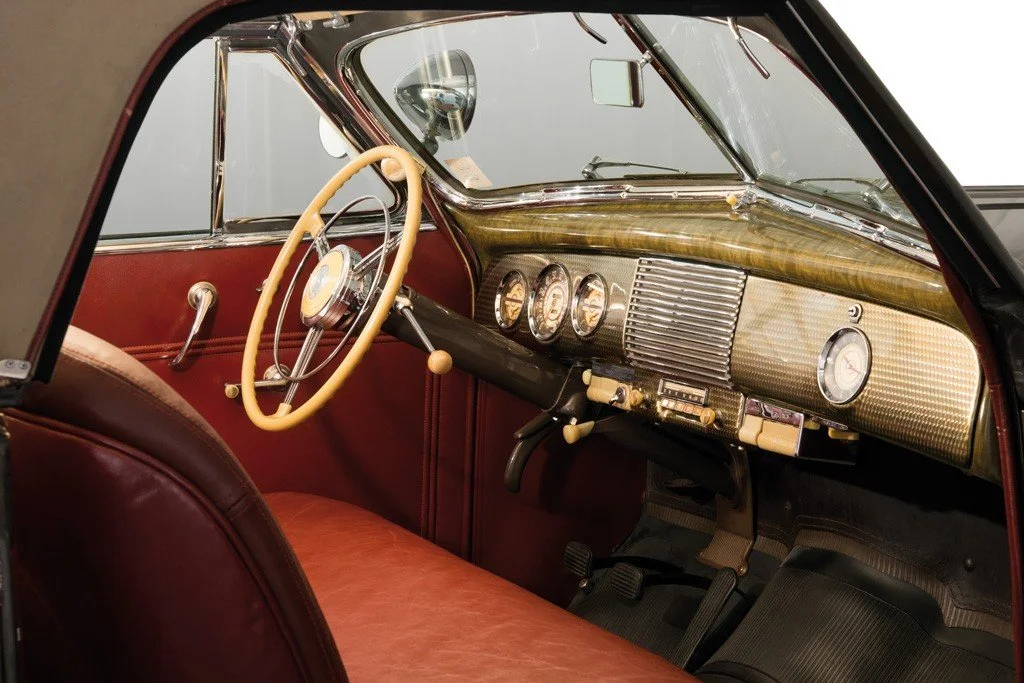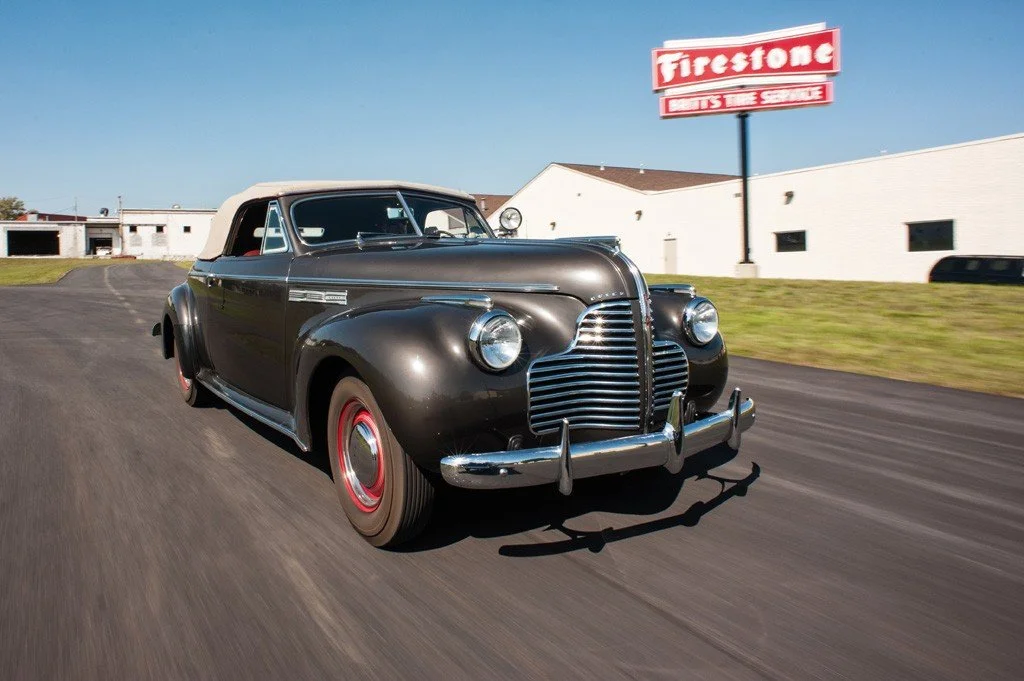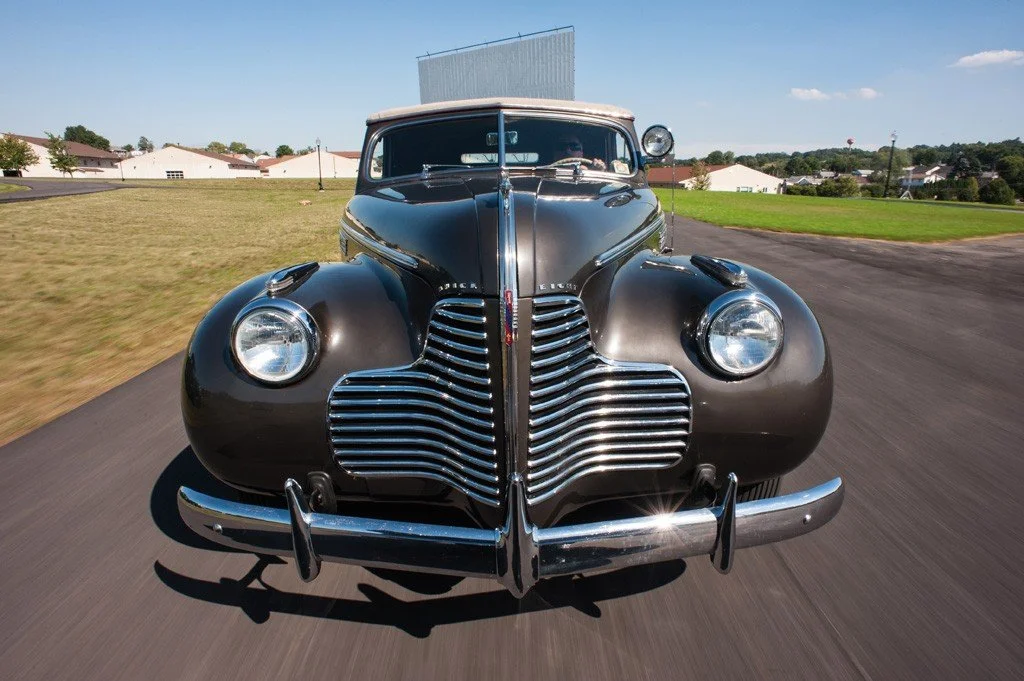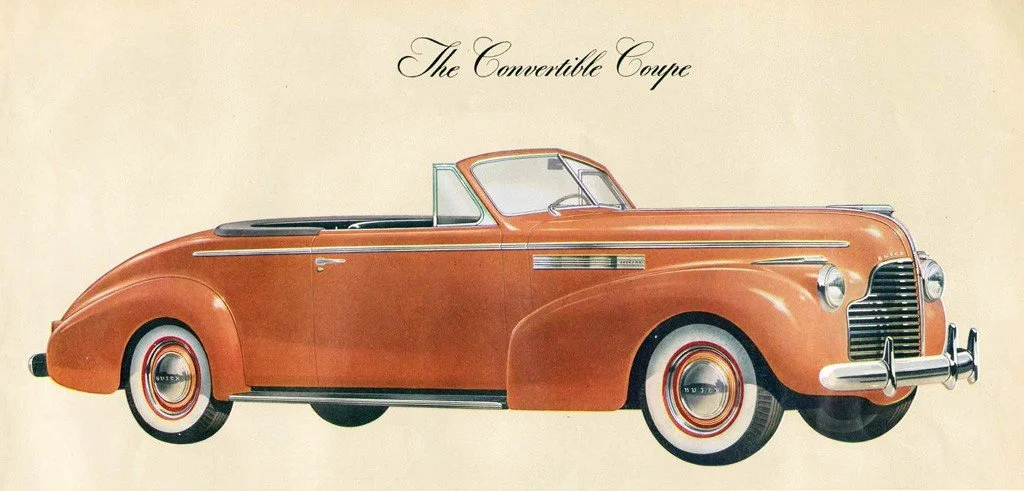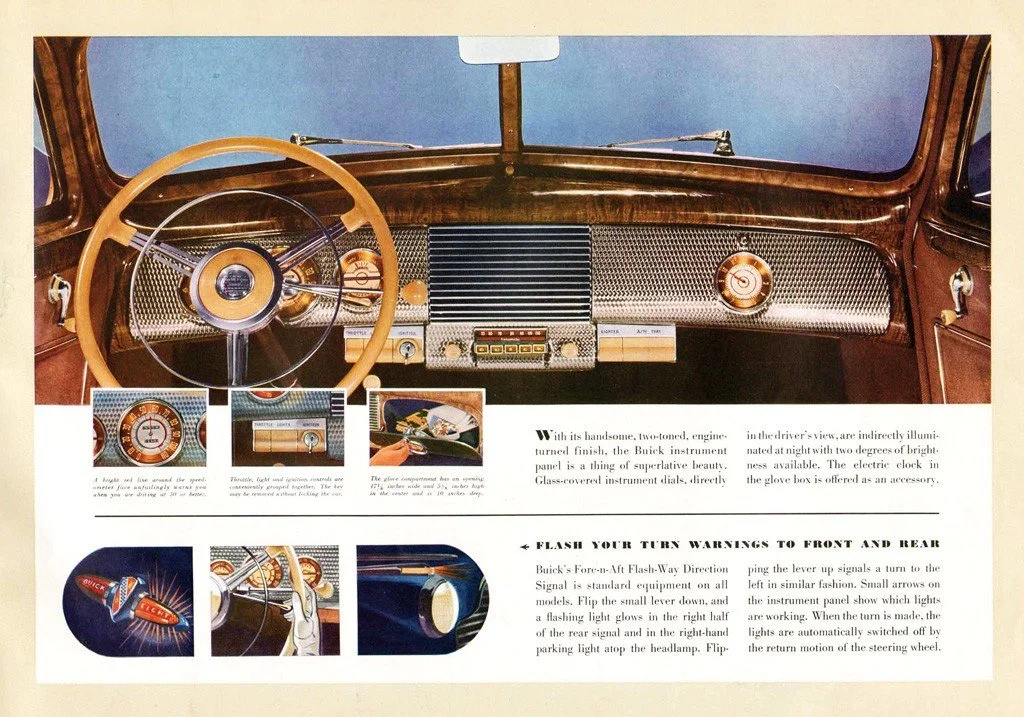-
Discovered in a garage in Coplay, PA, literally in the backyard of the collection's home base of Allentown, this completely original Buick Convertible was a rare and beautiful time capsule. The car was found in late 2004 on jack stands and covered in dirt, but displaying just 25,000 original miles.
Purchased by the Nicola Bulgari Car Collection in 2014 from the estate of the son of the original owner, this car was the only family car this man knew growing up. The car was only given a very thorough and caring freshening, but no restoration at all. Many of the original tags that adorned parts of the car when delivered new are still as new. After the cleaning and mechanical renovation, the car drives like no restored car could. It drives like a brand new 1940 car.
Buick produced 4,765 Super convertible coupes in 1940 at a base price of $1,211. New for this model year was the chassis shared by the Special and Super models. Oil filters were fitted to all engines, and the sealed beam headlights were installed in the restyled front fenders. Heater, radio and spotlight were the only options fitted at the factory. The combination of colors is original: body in Yosemite Gray with ragtop white and Brown leather interior. -
Company
General MotorsWheelbase
121inInterior trim
Maroon leatherBrakes
front and rear drumsMake
BuickLength
204inEngine
inline 8 - 248cidTires
6.50x16Model
Super - Model 56CWidth
78inCarburetor
1 Carter 440 SOriginal Price
$1,211Body style
2-door Convertible CoupeWeight
3785lbsHorsepower
107hp @ 3400rpmProduction
4,764Model year
1940Exterior paint
Yosemite Gray/White topTransmission
Synchro-shift 3-speed manual -
On September 16, 1908, Buick Motor Company head William Crapo Durant spent $2,000 to incorporate General Motors in New Jersey. Durant had made his fortune building horse-drawn carriages, and in fact, he hated cars as he thought they were noisy, smelly, and dangerous. Nevertheless, the giant company he built would dominate the American auto industry for decades. In the first years of the 20th century, however, that industry was a mess. There were about 45 different car companies in the United States, most of which sold only a handful of cars each year. Many of those companies had an unpleasant tendency to take customers’ down payments and then go out of business before delivering a completed automobile. Industrialist Benjamin Briscoe called this way of doing business “manufacturing gambling” and he proposed a better idea. To build consumer confidence and drive the weakest car companies out of business, he wanted to consolidate the largest and most reliable manufacturers, like Ford, REO, his own Maxwell-Briscoe, and Durant’s Buick into one big company. This idea appealed to Durant (though not to Henry Ford or REO’s Ransom E. Olds), who had made his millions in the carriage business just that way: instead of selling one kind of vehicle to one kind of customer, Durant’s company had sold carriages and carts of all kinds, from the utilitarian to the luxurious. Briscoe wanted to merge all the companies completely into one, while Durant wanted to build a holding company that would leave its individual parts more or less alone. Durant got his way, and the new GM was the opposite of Ford. Instead of just making one car, like the Model T, it produced a wide variety of cars for a wide variety of buyers. In its first two years, GM grouped together 30 companies, including 11 automakers like Oldsmobile, Cadillac, and Oakland, which later became Pontiac, some supplier firms, and even an electric company. Buying all these companies was too expensive for GM, and in 1911 the corporation’s board forced the spendthrift Durant to quit. He started a new car company with the Chevrolet brothers and was able to buy enough GM stock to regain control of the corporation in 1916, but his spending habits got the better of him and he was forced out again in 1920.
During the Depression, Durant went bankrupt, and he spent his last years managing a bowling alley in Flint. In the late twenties, three large companies emerged, Ford, Chrysler and General Motors, plus a small quantity of independent companies with an uncertain future. Ford and Chrysler followed the policy of building one car for each brand, so that a certain price segment could be readily identified with each brand. In the General Motors organization, each brand had several subseries that could meet the demands of any customer. A Buick Special could be cheaper than a luxury Oldsmobile, a brand that was considered cheaper than Buick. There was a car for every need.
The Buick lineup for 1940, for example, consisted of six different series, from the cheap Special to the luxurious limited, with a price that more than doubled. In between, there was a car for anybody. And the cheapest Chevrolet was only $236 less expensive than a Buick, not such a great difference for a lot better car. It is no wonder that Buick had a great sales success in 1940, with a completely face-lifted look and a brand new series, the beautiful Super, resulting in more than 283,000 cars produced for the model year. New grille and front fenders, sealed beam headlights mounted flush in the fenders, the elimination of running boards and streamlined bodies made the new Buick appear much more modern than 1939 models, even if the mechanicals were very similar.



